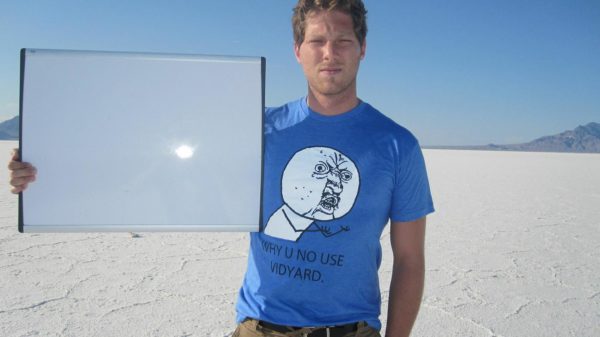
 Technology-driven changes to the way we communicate have always been the norm, but while it’s an awareness of those shifts that propels successful businesses, an eye to the evolving ways in which we use any given technology, even a well-established one like video, can be just as revelatory.
Technology-driven changes to the way we communicate have always been the norm, but while it’s an awareness of those shifts that propels successful businesses, an eye to the evolving ways in which we use any given technology, even a well-established one like video, can be just as revelatory.
So says Vidyard CEO and co-founder Michael Litt, who has noticed a peculiar quality about the youngest members of his team: they don’t know how to use email.
“The interesting thing is that they grew up not only with access to the Internet but with mobile devices, so they’ve kind of traded content for convenience,” says Litt, who sat down with Cantech Letter at this week’s SaaS North conference in Ottawa. “It’s to the point where they’re mostly using two thumbs to input into these devices, and if you’re limited in that way, you’re going to resort to using images and video and rich media that these devices support.”
“Generation Z, they’ve only really used e-mail to submit school assignments,” he says. “And as every year goes by, we see more and more companies trying to figure out how to communicate with video both internally and externally and that’s where we sit. We want to be the system of record for those companies.”
These days, Kitchener-based Vidyard, which began in 2012 and started commercializing in 2014, is focused on getting more companies to adopt their GoVideo integrated video messaging app, which integrates with a business’ existing platform and allows for both one- and two-way video messaging between sales teams and customers, with the aim of developing more incisive customer engagement.
“What we found over the years is that companies are looking for ways to use video more effectively,” Litt says. “They want to know who’s watching and for how long and how that data can improve their video in the future. So we take that data and give businesses a better perspective on their customers.”
“If you open an email and click a link, most systems will tell me that you clicked a link but they have no idea if you actually read the content, and chances are you may not have,” he says. “A lot of companies use that data to profile their customers, saying, ‘Look, he clicked the link, he read the information, he must be interested in buying,’ and then they call you up and you’re actually not interested and didn’t read it.”
“With video, we can actually see if someone watched the whole video or just ten seconds, and that might be a bigger indicator of interest,” he says. “We’re helping companies to only talk to individuals that are showing real interest rather than with text where it’s just spray and pray.”
And even with our attention spans forever dwindling as the number of available distractions keeps multiplying, Litt argues that a well-delivered video can still make an impact.
“When someone is captivated by a video, that attention span is actually a lot longer, and for every extra second you spend on particular content your focus is that much more deeply embedded,” he says. “So, it’s a very powerful tool when used effectively.”
Leave a Reply
You must be logged in to post a comment.




 Share
Share Tweet
Tweet Share
Share




Comment